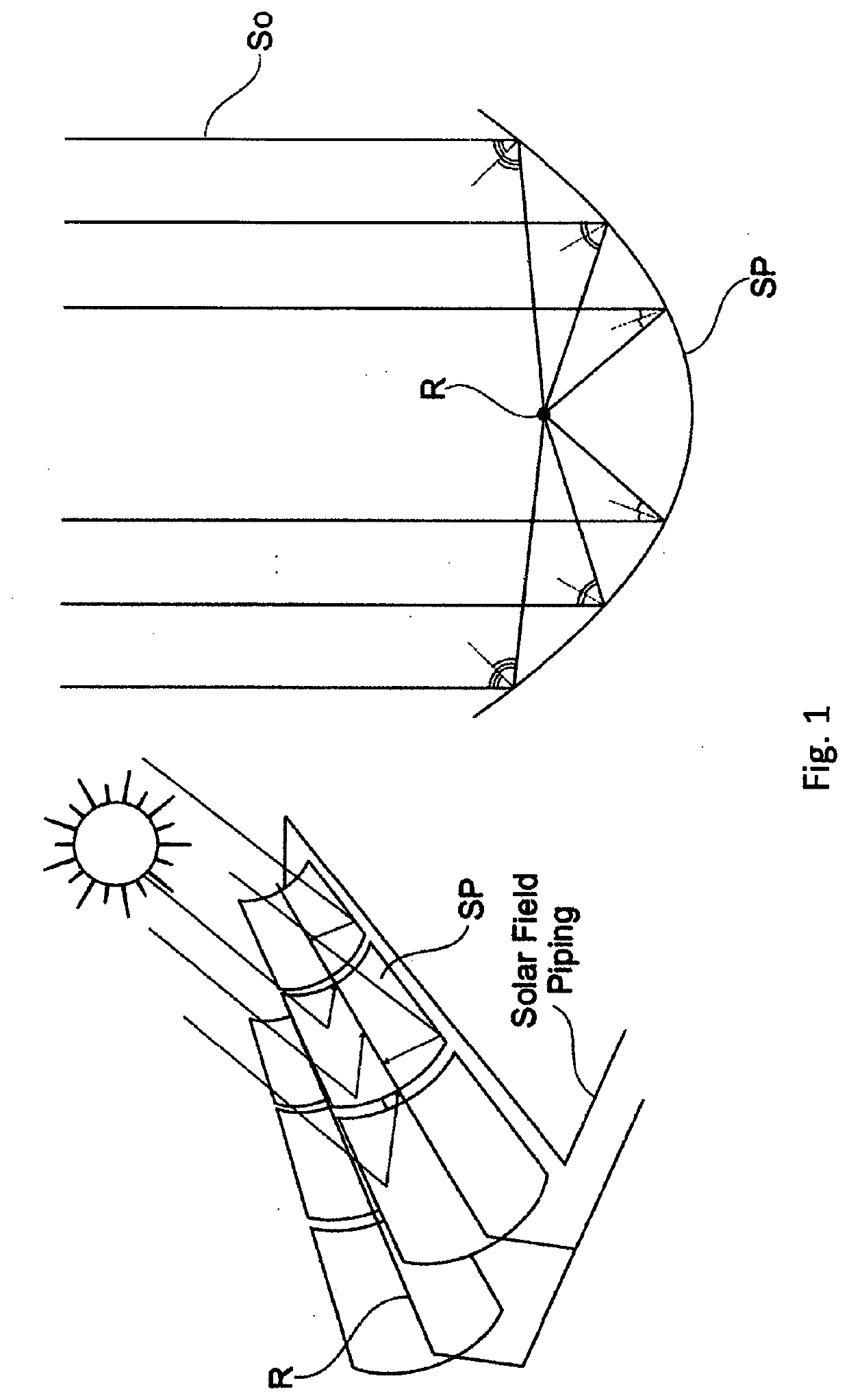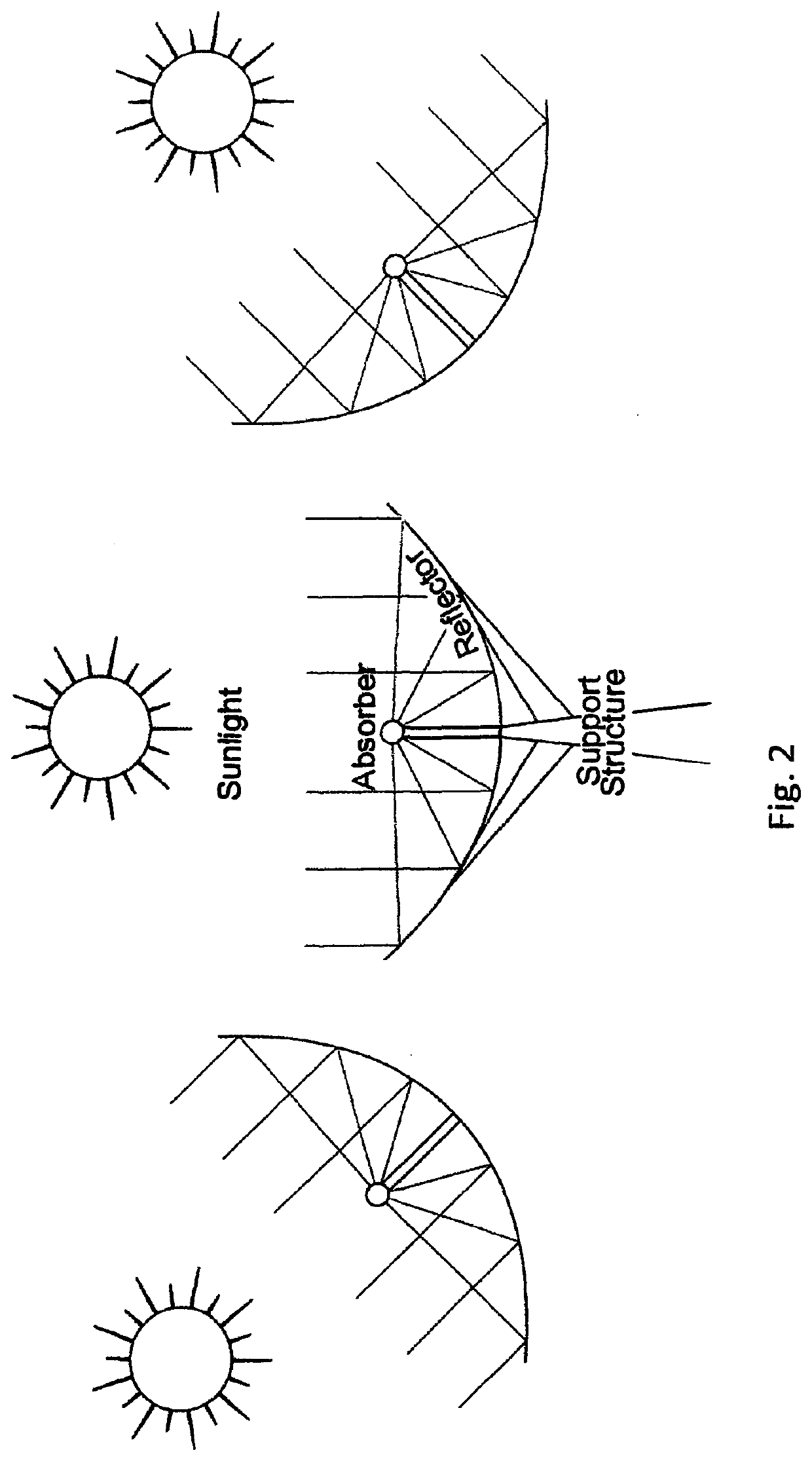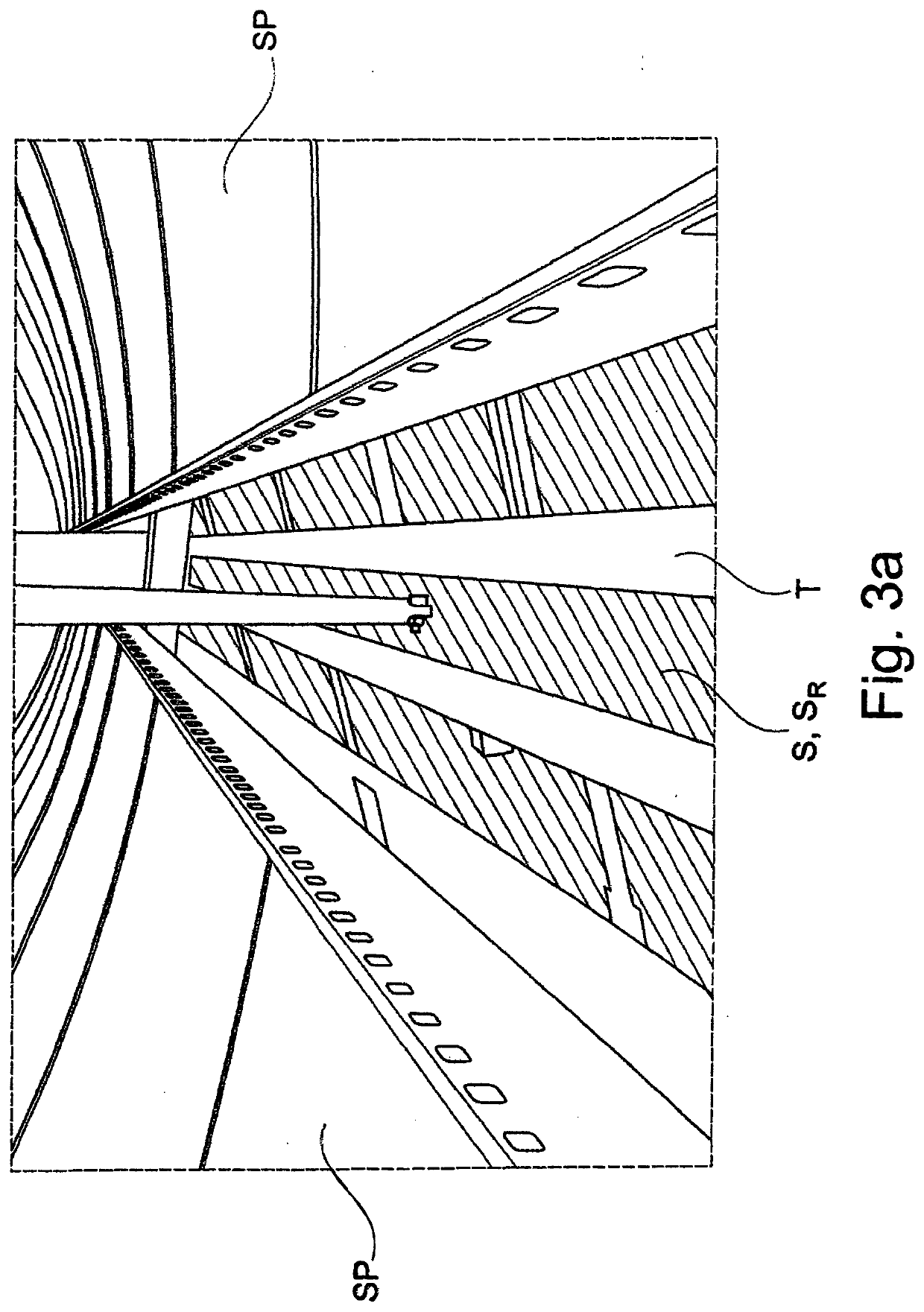Sensor arrangement and optimized tracking for csp systems
- Summary
- Abstract
- Description
- Claims
- Application Information
AI Technical Summary
Benefits of technology
Problems solved by technology
Method used
Image
Examples
Embodiment Construction
[0102]As discussed above and in the background of the invention, which also relates to features of and related to the present invention, a system of a parabolic trough, i.e. a solar collector assembly (SCA) is exemplarily shown in FIG. 1. A parabolic trough or solar collector assembly (SCA) comprises a linear parabolic reflector SP made of a number of solar collector modules (SCM) fixed together to move as one SP that concentrates light onto a receiver positioned along the reflector's focal line. A receiver tube is positioned directly above the middle of the parabolic mirror at its focal line and filled with a working fluid. The reflector follows the sun during the daylight hours by tracking along a single axis. A working fluid such as molten salt or oil is heated to 150-400° C. (oil) or 200-550° C. (molten salt) as it flows through the receiver, from a receiver entry to a receiver exit. The hot fluid can be used for many purposes. Often, it is piped to a heat engine, which uses the...
PUM
 Login to View More
Login to View More Abstract
Description
Claims
Application Information
 Login to View More
Login to View More - R&D
- Intellectual Property
- Life Sciences
- Materials
- Tech Scout
- Unparalleled Data Quality
- Higher Quality Content
- 60% Fewer Hallucinations
Browse by: Latest US Patents, China's latest patents, Technical Efficacy Thesaurus, Application Domain, Technology Topic, Popular Technical Reports.
© 2025 PatSnap. All rights reserved.Legal|Privacy policy|Modern Slavery Act Transparency Statement|Sitemap|About US| Contact US: help@patsnap.com



